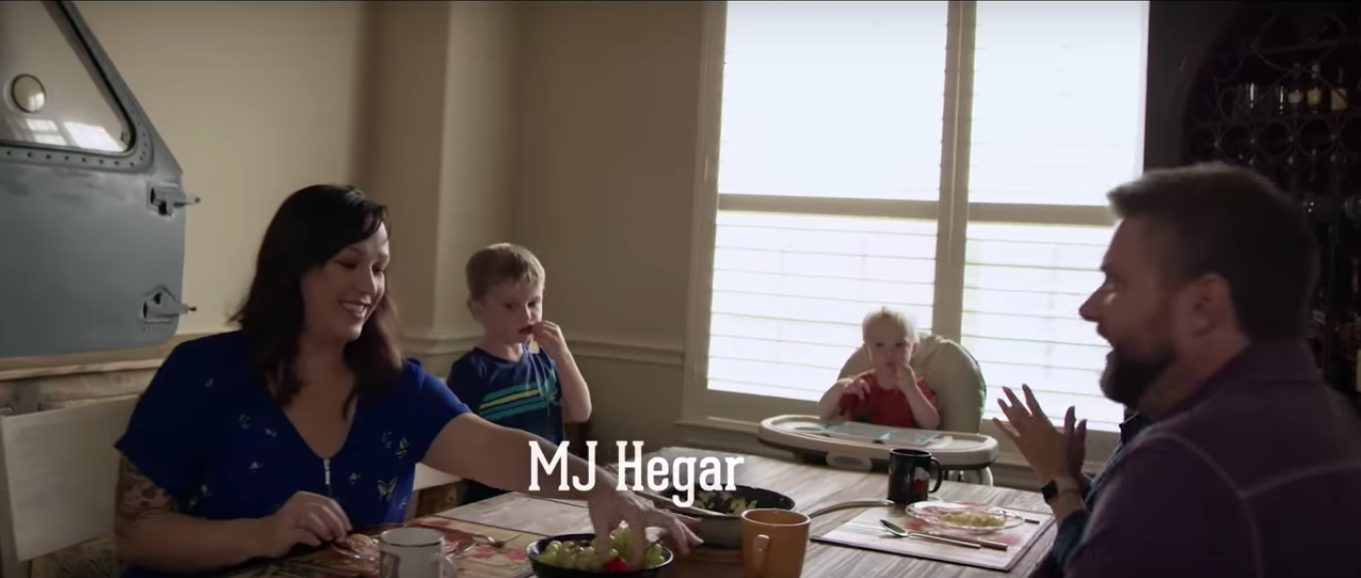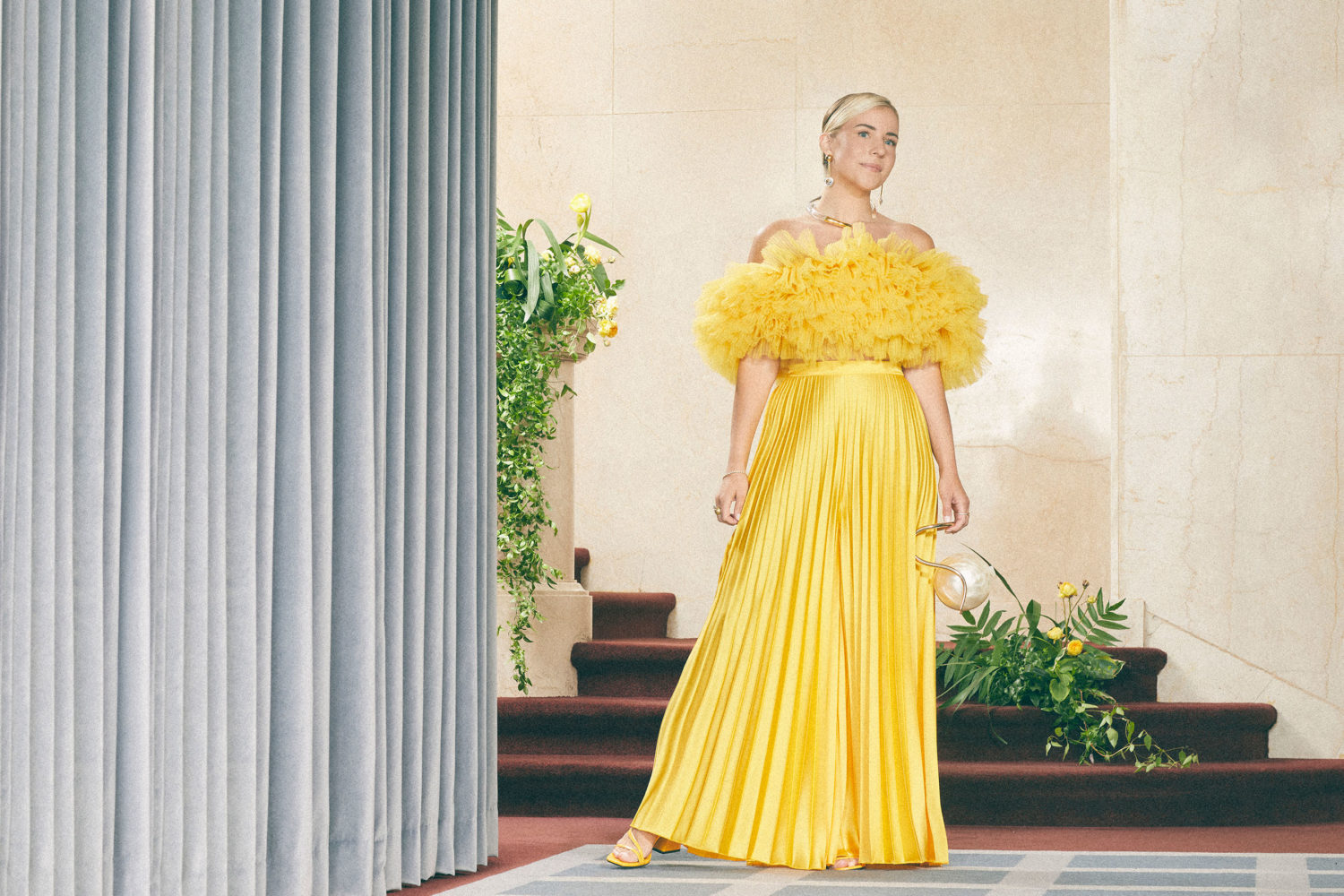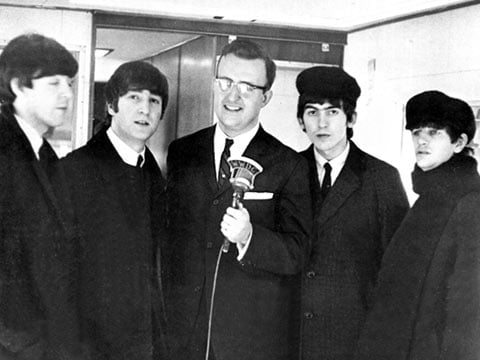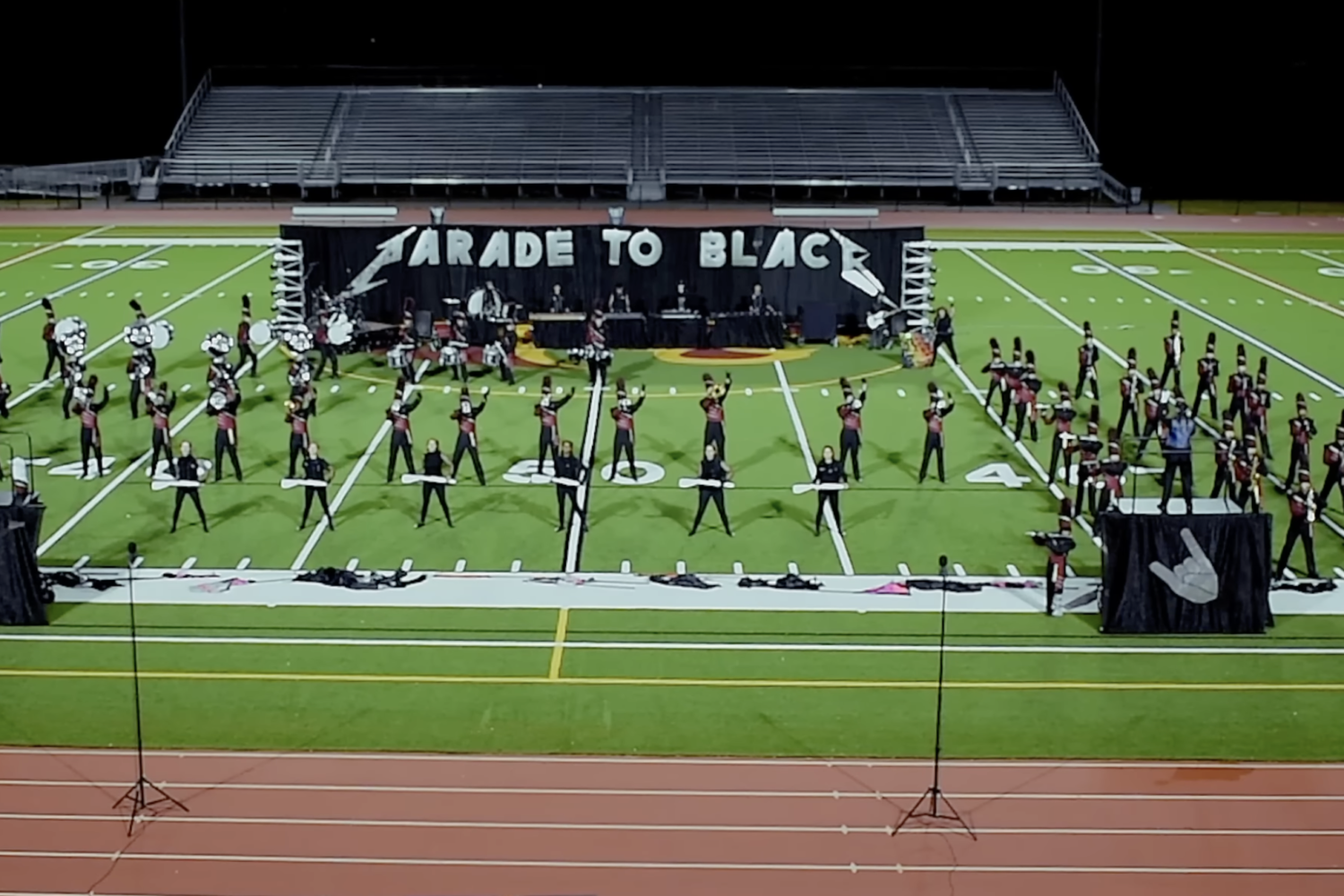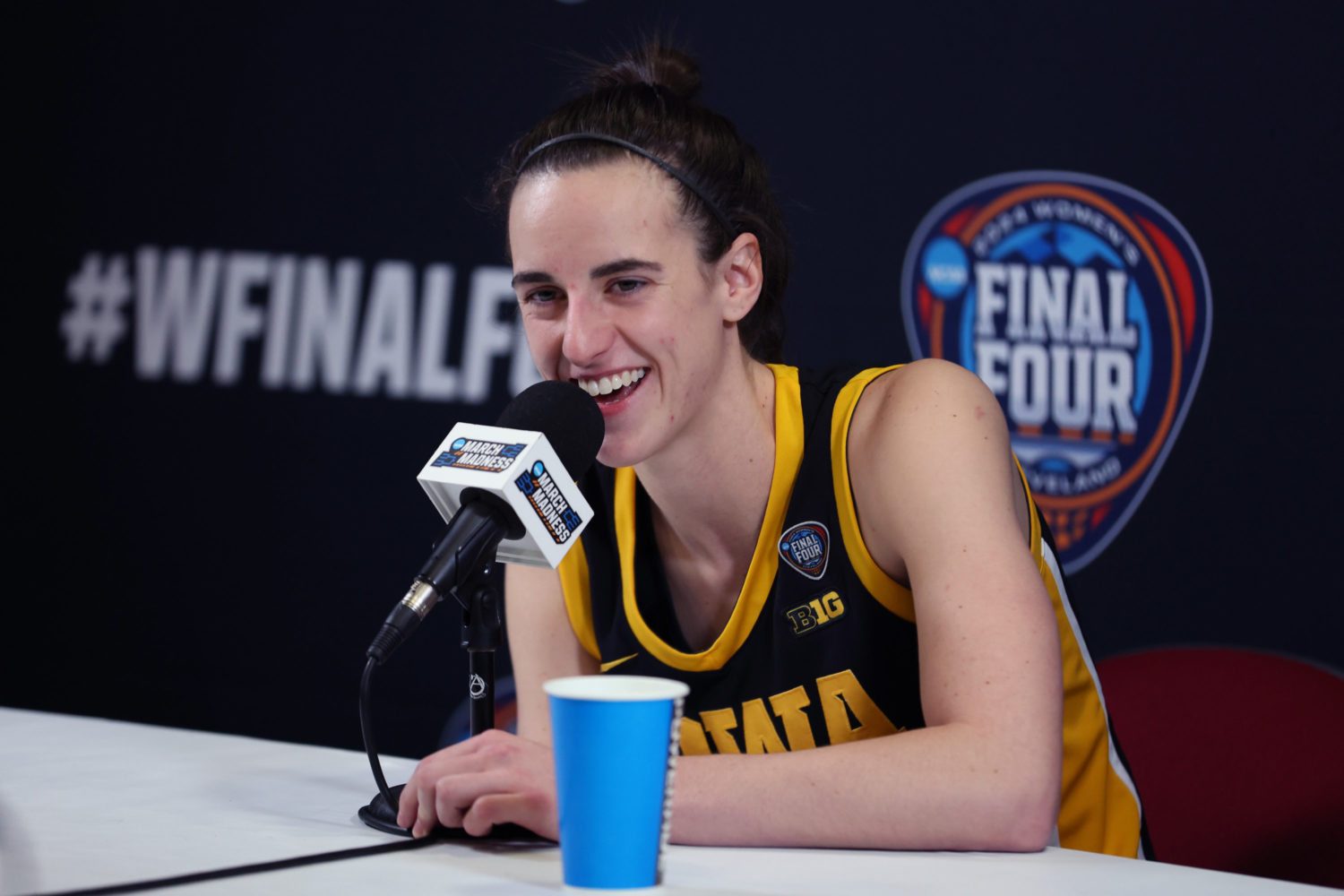Cayce McCabe had been thinking about that helicopter door for a while. His colleague at Putnam Partners, a Democratic ad agency in DC, travelled last spring to pitch a new client—Mary Jennings Hegar, an Air Force vet running for Congress in central Texas. He came back with the job but also an unforgettable detail about Hegar’s home: propped up against the wall, behind the table where her family eats dinner, was the door from the rescue chopper she was piloting when it was shot down in Afghanistan.
The story of the helicopter door came back to McCabe as he read the opening chapter of Hegar’s 2017 memoir Shoot Like a Girl. “My first memory as a four-year-old little girl was seeing my biological father push my mother through a plate-glass door,” she writes. Then again when the adman watched a video of Hegar giving a TED Talk: “I got the door shut in my face so many times.”
“The repetition of that word ‘door’ really stuck with me,” says McCabe. So in late May, when Hegar won her Democratic primary and McCabe set out to write an ad to tell her story, the concept was already clear to him. Ten drafts and one month later, he had a cinematic three-minute spot, starting at Hegar’s front-door in suburban Round Rock, Texas, and ending with her promise to “show the door” to her opponent, Tea Party incumbent John Carter.
In a cycle that’s already produced a slew of conversation-stoking ads (Randy Bryce’s bio spot, Alexandria Ocasio-Cortez changing her shoes on the subway platform), McCabe may have just made the first “come here, you’ve got to see this”, huddle-around-the-same-monitor spot of the 2018 electoral season. It’s definitely the most viral, with more than 2.5 million views on YouTube and a passel of Hollywood retweets.
Kristen Bell, Alyssa Milano, and Chelsea Handler all pushed it to their followers. Lin-Manuel Miranda tweeted it; Padma Lakshmi saw Miranda’s tweet and nudged it again. The Fonz tweeted it. Kim Catrall and Carl Weathers replied. Bob Odenkirk tells Washingtonian he saw it on his old co-star David Cross’ account. “I showed it to my wife and all of Twitter.”
“The hope was always that it would go viral,” says McCabe. “Obviously, you can’t just touch something with a magic wand and make it go viral, but we knew we were going to try to produce really eye-catching content.” That’s something Putnam Partners has been remarkably successful at over the last few years. It’s the same shop behind Jason Kander’s blindfolded gun assembly ad in 2016 and Marine Corps vet Amy McGrath’s bio spot in Kentucky earlier this cycle. But, according to McCabe, the choice to make a different kind of ad isn’t just artistic—ad-makers are seeing a different kind of candidate emerge. “It’s not the normal sort of climb the political ladder, become a city counselor and then state rep and then a state senator,” says McCabe. “These new people who have these really dynamic life stories, who come from non-traditional backgrounds and are not politicians. They make for just great visual video content because they have such powerful stories.”
In Hegar’s case, the visual potential for her war story is so evident that it was optioned for a movie before her memoir was even released. Her war story might also be what makes Hegar the right Democrat for the ticket in this deep red Republican stronghold containing part of Fort Hood: it has a large population of veterans and active service military.
There’s a balancing act in making ads for these long-shot races, ads that need to get out the vote while inspiring interest in donors beyond the district limits. “The number one thing that voters want right now is authenticity,” says McCabe, which to him means making the ad that fits the candidate rather than the district, all while still being as “local” and “genuine” as possible. For example, in the case of “Doors”, sticking with the abbreviation “UT” when University of Texas might be more clear to that broader, viral audience. “Everyone in Texas says UT,” says McCabe. “That’s just what MJ would say.”
The ad, shot over a day and a half in Texas, also grapples with a more timeless campaign dilemma than authenticity: going negative. For McCabe, it was an easy choice. Hegar’s political life really began after leaving the Air Force, when she sued the Department of Defense to open up combat positions to women; her decision to run for office is tied up in her dissatisfaction with John Carter for refusing to meet with her throughout the suit. Without going negative, McCabe thinks the viewer would feel something “missing” from Hegar’s story. But even going negative looks different now. Less negative, if you will. “We don’t have the spooky images and the scary music and the dark-colored graphics and everything that people are used to in a negative ad,” says McCabe.
The one component of virality that McCabe and his colleagues can’t control for is timing. Three minute ads aren’t developed for television but for sharing, mostly on Facebook, Twitter and Youtube. Coincidentally, these are mediums where users consume a lot of news. Right now, especially for Democrats obsessing over the Trump administration, that means seeing a lot of bad news. Hegar’s ad dropped on June 20, in the midst of outcry over the President’s family separation policy at the border. “There’s not a lot of hope in those news feeds,” says McCabe. “When someone shares a video like this, it gives you a little bit of hope. It’s the type of thing that people want to pass around and say ‘Have you seen this?’…I think part of this has to do with the moment that we’re in.”

